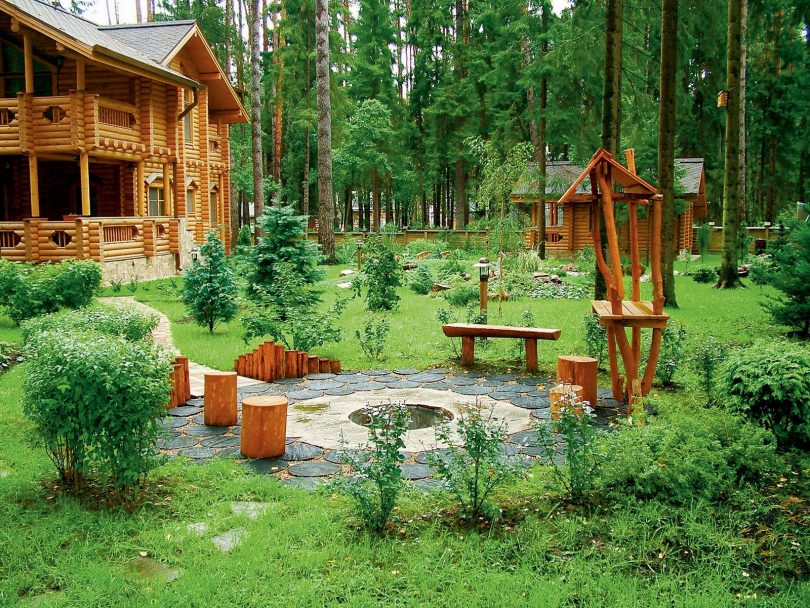Creating a wildlife pond on a 15-acre homestead is a dream come true for nature enthusiasts. This article will guide you through the essential steps and considerations for designing a pond that not only beautifies your land but also supports local wildlife. If you’re passionate about sustainability and want to make the most of your homestead, this project is an exciting opportunity.

The Importance of a Wildlife Pond
A wildlife pond serves as a vital habitat for various species, offering food, shelter, and breeding grounds. It enhances biodiversity and contributes to the ecological balance of your homestead. Moreover, a well-designed pond can be a serene retreat for relaxation and reflection.
Environmental Benefits
By integrating a pond into your landscape, you support a wide range of plant and animal life. From frogs and dragonflies to birds and mammals, the biodiversity it attracts helps maintain a healthy ecosystem. This aligns with sustainable living practices, allowing you to contribute positively to the environment.
Enhancing Aesthetic Appeal
A thoughtfully designed pond can be a stunning focal point on your property. It adds visual interest and can be customized to fit your style, whether you prefer a naturalistic look or a more formal design. A pond also increases the value of your homestead, making it an attractive feature for potential buyers.
Planning Your Wildlife Pond
Before starting construction, it’s crucial to plan carefully. Consider the size, location, and purpose of your pond. Think about how it will fit into your existing landscape and what types of wildlife you hope to attract.
Choosing the Right Location
Select a spot that receives a good amount of sunlight, as this will support plant growth and keep the water warm. Avoid areas with overhanging trees that could drop leaves into the pond, causing maintenance issues. Ensure the pond is easily accessible for maintenance and observation.
Determining the Pond Size
The size of your pond will depend on your available space and resources. A larger pond can support more wildlife and requires less maintenance than a small one. However, small ponds can still be effective if designed thoughtfully.
Designing for Wildlife
Incorporate features that cater to various species. Shallow edges provide access for amphibians, while deeper sections offer refuge for fish. Include a variety of plants to create different habitats and ensure a balanced ecosystem.
Building Your Pond
Once you’ve planned your design, it’s time to start building. This process involves excavation, lining, and planting. Make sure to follow your design plan closely to achieve the desired outcome.
Excavation and Lining
Begin by excavating the area to the required depth, creating shelves for plants and shallow areas for wildlife access. Use a liner to prevent water loss and ensure longevity. Choose a durable material that can withstand the elements.
Adding Plants and Features
Select native plants that provide food and shelter for local wildlife. Consider adding rocks, logs, and other natural features to create hiding spots and basking areas. This will encourage a diverse range of species to thrive in your pond.
Maintaining Your Pond
Regular maintenance is essential to keep your pond healthy and attractive. Monitor water quality, control algae growth, and remove debris regularly. Maintenance routines can be simplified through careful planning and design.
Water Quality Management
Test the water regularly to ensure it remains balanced and free from pollutants. Aeration and filtration systems can help maintain clarity and oxygen levels, promoting a healthy environment for wildlife.
Seasonal Care
Adapt your maintenance routine to the changing seasons. In winter, remove fallen leaves and debris to prevent decay. In summer, monitor water levels and temperature to prevent stress on plants and animals.
Integrating Your Pond with the Homestead
Your pond should complement the rest of your homestead, integrating seamlessly with gardens, paths, and other features. This creates a cohesive and functional landscape that enhances your property.
Connecting with Other Features
Link your pond to other elements of your homestead, such as gardens or sitting areas, with paths or natural corridors. This encourages wildlife movement and provides you with easy access to enjoy the pond’s beauty.
Creating a Sustainable Ecosystem
Ensure that your pond supports sustainable living practices. Utilize rainwater harvesting systems to maintain water levels and consider solar-powered pumps for energy-efficient maintenance.
For more insights on sustainable practices, visit our sustainability journey on our homestead.
Conclusion
Designing a wildlife pond on your 15-acre homestead is a rewarding endeavor that benefits both you and the environment. By following these guidelines, you can create a thriving habitat that enriches your landscape and supports local wildlife.
Start Your Pond Project Today
Embrace the opportunity to contribute to biodiversity and sustainability. With careful planning and execution, your pond will become a cherished part of your homestead for years to come. For more ideas on living sustainably, check out simple ways to live sustainably on a homestead.

FAQs
What is the ideal size for a wildlife pond?
The ideal size depends on your space and resources, but larger ponds generally support more wildlife and require less maintenance.
How do I choose the right plants for my pond?
Select native plants that provide food and shelter for local wildlife. They are more likely to thrive and support a balanced ecosystem.
Can I add fish to my wildlife pond?
Yes, but choose species that are compatible with other wildlife. Avoid fish that may prey on amphibians or other pond inhabitants.





